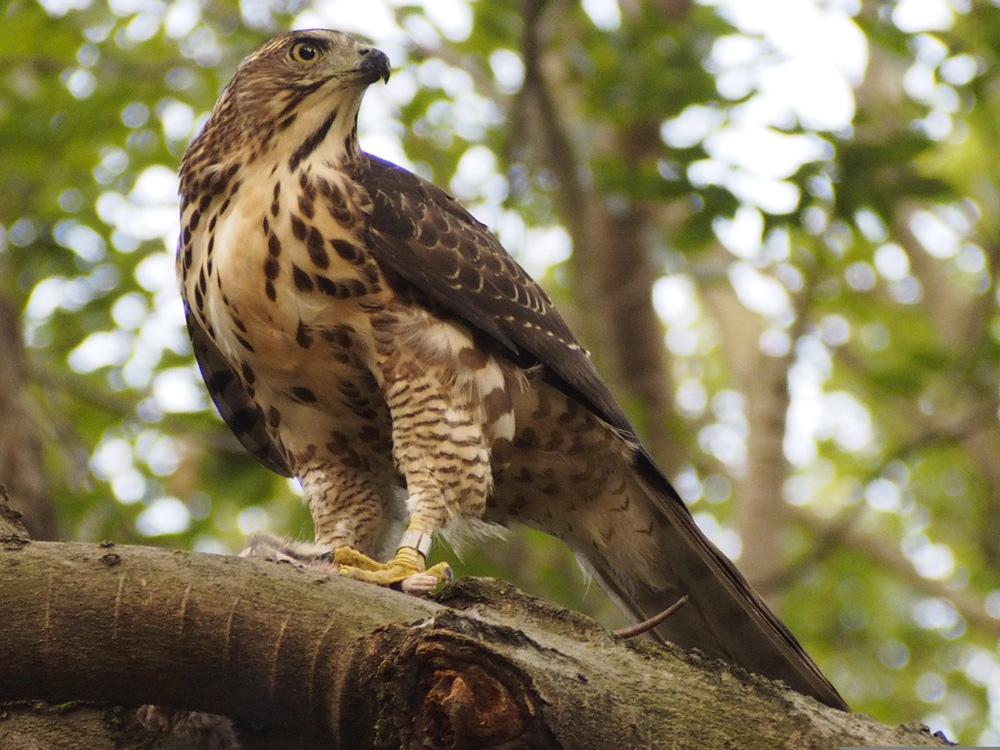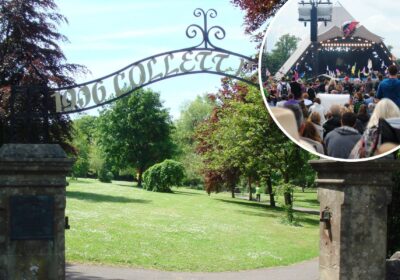by Susie Curtin.
It is not often that I set out into the woods with an agenda, but I have recently discovered a part of the forest that is home to a goshawk, and I feel sure on such a bright sunny autumn day as this, that if I sit here quietly from my vantage point in its territory, I will be rewarded with another brief glimpse of its magnificence.
For those of you who have been fortunate enough to witness the gymnastic, shape-shifting flight of this large hawk darting through the tree trunks, you will know why I have been left wanting more.
In a lifetime of bird watching, I have barely seen these mysterious hawks despite always looking out for them whenever I have been out in extensive woodlands.
Although they are the largest of all our hawks, they are the most secretive and elusive, thus their nickname of ‘phantom of the forest’.
But last week, just by chance, I happened to spot a pair flying tandem here over the treetops, their distinctive broad, barred wings clearly visible against the blue sky.
Then, beneath the canopy, I watched in awe as one of them sped effortlessly through the branches and tree trunks, folding and unfolding its wings and tail as it did so.
With its storm-grey back, fierce crimson eyes and a flash of white barring, twice the size of its sparrowhawk cousin, it was unmistakable.
Then, like a phantom, it vaporised amid the conifers and was impossible to detect again. It was over in a couple of seconds, but the thrill of that moment stayed with me for days. A goshawk is the epitome of ‘wildness’.
These extraordinary birds were once driven to extinction in the UK, and they are still the most persecuted of our birds of prey, for they are ferocious hunters taking pheasant, corvids, pigeons, squirrels and rabbits following a long agile chase or a sudden ambush.
Deliberate re-introductions and falconry escapees have enabled the population to recover slightly, but still there are only about 400 breeding pairs.
Late morning has now become late afternoon, and I have only had a momentary glimpse of my hawk through the birch canopy – a sighting that left more doubt than certainty.
Was that really them?
My attention is drawn to the late flying dragonflies, the speckled wood and comma butterflies that grace the path, a solitary red kite and a pair of buzzards that soar on the thermals and disappear.
The spotted flycatchers have left for home in tropical Africa and there are just a handful of swallows to be seen as autumn draws in.
Eventually, I call it a day, gather my belongings and follow the track alongside the field margin.
As I turn the corner, still feeling slightly disappointed at not having had a good sighting, there before my eyes is a white hart and a small herd of fallow deer. They stop to look at me before trotting deep into the undergrowth.
Immediately my disappointment gives way to gratitude – such an unexpected delight to end the day. Perhaps it is enough after all just to know that my hawks are here whether I see them or not. It has still been a therapeutic, peaceful day immersed in nature.
Dr Susie Curtin, email curtin.susanna@gmail.com











Leave a Reply